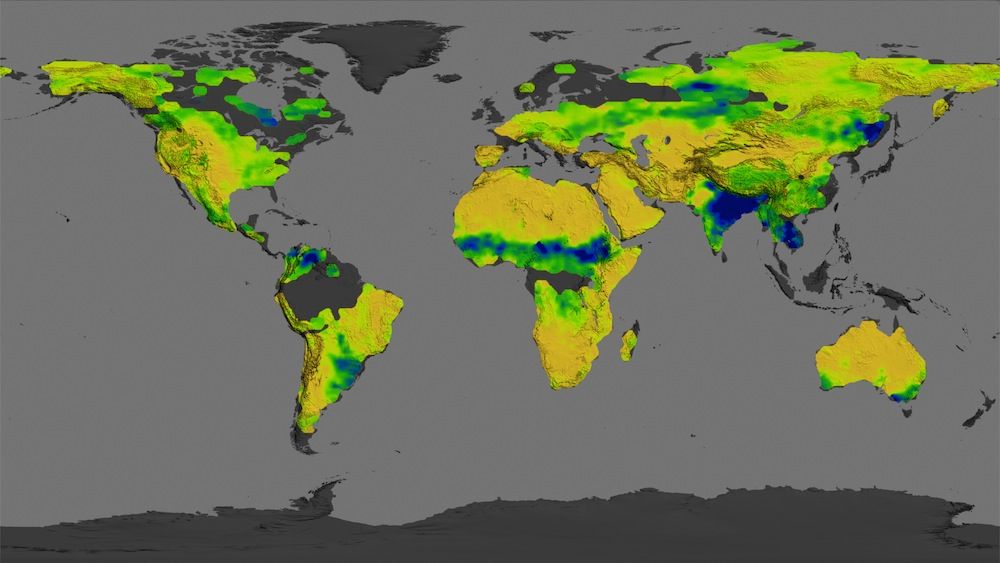Ocean-Watching Satellite Reveals Secrets of Soil (Image)

A satellite launched to study the salinity of the ocean is also proving helpful in understanding the land.
NASA's Aquarius instrument, which is aboard the Argentinian Satélite de Aplicaciones Científicas, captured the data used to make this image showing soil moisture around the globe. This soil moisture map is useful for researchers monitoring soil conditions for agriculture, as well as scientists trying to understand the global water cycle, according to NASA's Earth Observatory.
On the map, yellow regions are the driest, green areas contain more moisture and blue spots are the wettest of all.
Aquarius has been in orbit since 2011, and gathered the data for this image in August 2013. It shows broad regions of aridity in Africa, including the Sahara desert. Australia's interior desert is also clearly visible, with the continent's moisture concentrated along the coasts. In the United States and Canada, the dry West contrasts with the relatively wet South and East.
Aquarius gathers data on soil moisture by detecting microwaves given off by the top 2 inches (5 centimeters) of soil. Changes in the microwave signal indicate different levels of moisture. [Dry and Dying: Images of Drought]
Aquarius can't cover the entire globe: It scans the planet in chunks that are 60 miles (100 kilometers) wide, so small islands like Indonesia and peninsulas like Italy aren't clearly resolved. Snow and ice also confuse the instrument, which is why Antarctica, Greenland and most of the Arctic appear in gray. Heavy tree cover, as in the Amazon, distorts the signal, too, which explains the missing data in South America, according to Earth Observatory.
Though not shown in this image, Aquarius also collects data on the concentration of salt at the ocean's surface. It has found low salinity around the equator in the Pacific, where precipitation dilutes the salt at the surface. Similarly, the infusion of freshwater from the mouth of the Amazon causes a trail of low salinity stretching far into the Atlantic. The North Atlantic, in contrast, is particularly salty, thanks to water evaporation that leaves salt behind.
Sign up for the Live Science daily newsletter now
Get the world’s most fascinating discoveries delivered straight to your inbox.
Sea surface salt can affect the circulation of freshwater around the globe, as well as climate processes, according to NASA.
But Aquarius' land-moisture monitoring is just as important, according to researchers at Earth Observatory. Soil moisture measurements can help predict droughts and floods, and provide crucial information for agriculture.
NASA plans to launch a new satellite, the Soil Moisture Active Passive (SMAP) satellite, this year to gather more data on soil moisture, including whether that moisture is in liquid or frozen form.
Editor's Note: If you have an amazing nature or general science photo you'd like to share for a possible story or image gallery, please contact managing editor Jeanna Bryner at LSphotos@livescience.com.
Follow Stephanie Pappas on Twitter and Google+. Follow us @livescience, Facebook & Google+. Original article on Live Science.

Stephanie Pappas is a contributing writer for Live Science, covering topics ranging from geoscience to archaeology to the human brain and behavior. She was previously a senior writer for Live Science but is now a freelancer based in Denver, Colorado, and regularly contributes to Scientific American and The Monitor, the monthly magazine of the American Psychological Association. Stephanie received a bachelor's degree in psychology from the University of South Carolina and a graduate certificate in science communication from the University of California, Santa Cruz.











